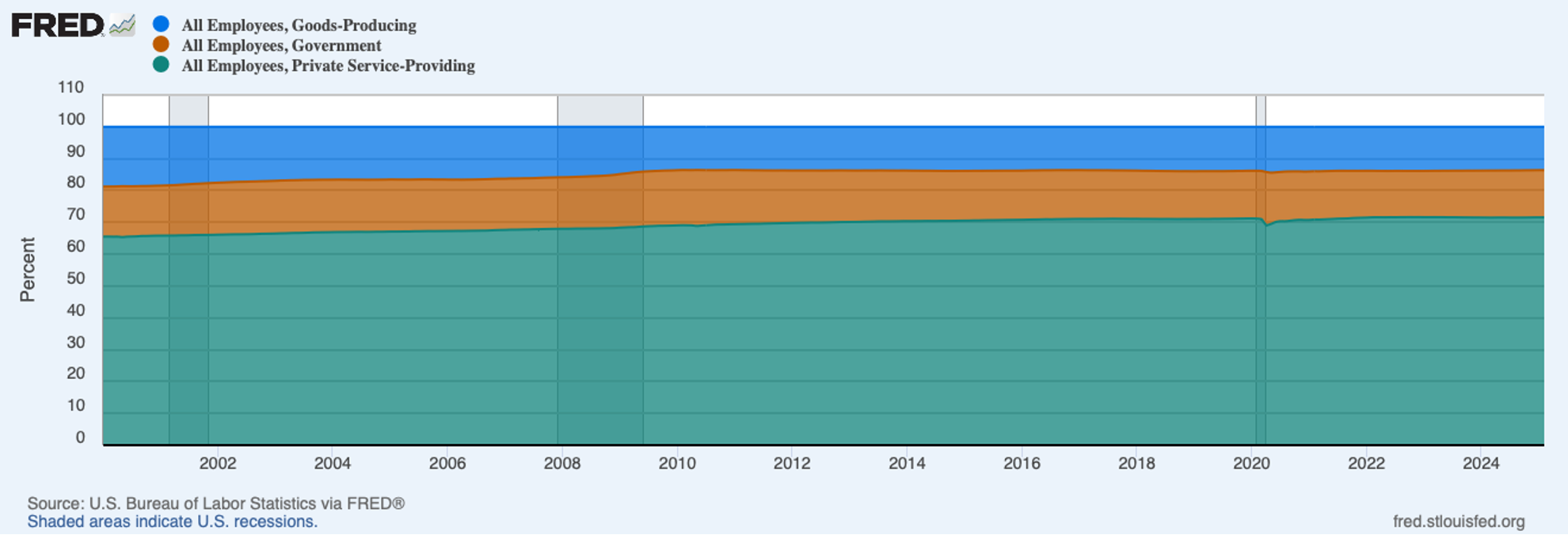#JobsDay Preview: Will March Jobs Data Confirm or Refute Increasingly Pessimistic Sentiments About the Economy?
March 28, 2025
By Michael Madowitz
Amid an unusually large disconnect between hard and soft data on the economy, the March jobs report (which will be released Friday, April 4 at 8:30 am ET) will be closely watched for signs of how well the economy is holding up under the strains the Trump administration continues to place on it. While “soft” measures of economic conditions—survey data compiled on things like consumer and business expectations and plans—can pick up trends faster than the “hard” data derived from economic activity, jobs data tend to detect economic shifts faster than other hard measures. Jobs data are also more reliable than softer measures—this is especially true of household survey measures such as the unemployment rate, where the data are not subject to revision. So far there hasn’t been much hard data on the economy since the Trump administration took over, while soft data have turned strikingly negative.
What we can predict with great reliability is that jobs will break down as roughly 14 percent “goods producing” (things like manufacturing and construction), about 15 percent government (overwhelmingly state and local government—think teachers, police, and firefighters), and a little over 70 percent services—these trends are remarkably stable over time.
The details to focus on in this report are policy-related. With the threat of rising tariffs, manufacturing and transportation could show unusual short-term strength as consumers pull activity forward to avoid higher taxes later. Manufacturing has typically added around 14,000 jobs per month during this expansion. Transportation and warehousing is a little trickier, as it boomed early in the recovery but had added only around 2,000 jobs a month the last couple years. However, there has been a surge in hiring since November, with the average over the last four months spiking to 24,000. Whether that surge fizzles in March or a little later will be an indicator of how well demand is holding up as Americans say they are growing increasingly pessimistic about the economy.
A final sector to watch would be construction—tariffs can slow the economy down, but the risk of the current tariff uncertainty is that it can lead to sudden drops in investment while businesses wait to see what policy will actually look like in a less uncertain future. A slowdown in construction employment would be one of the more reliable signals that tariff uncertainty is having real effects on the ground—the sector has added about 20,000 jobs a month during this expansion. That said, construction is notoriously volatile as it is unusually impacted by weather, and with 28.6 percent of construction workers being foreign born, it would be simplistic to assume tariffs are the only, or even the largest, factor at play in construction.
The jobs numbers are unlikely to be definitive, and some signs of economic strain may not be those we’d expect to see in the long term. But this jobs report is the first real reading of hard data we can look at to corroborate some of the more alarming economic trends in soft data so far.

